Determining the Ideal CFM for Your Outdoor Range Hood (From the Pros)
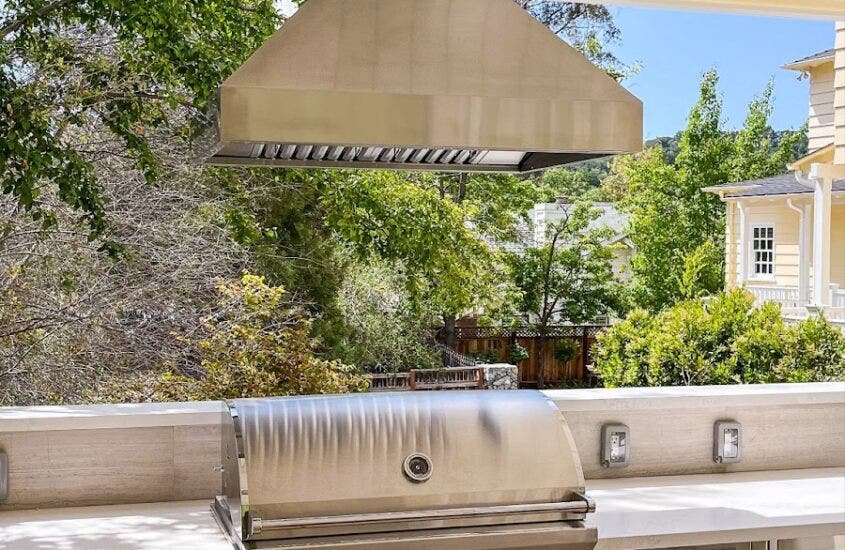
Outdoor kitchens are the ultimate oasis for culinary enthusiasts, offering a chance to break free from the confines of the indoor kitchen and immerse yourself in the sights, sounds, and flavors of alfresco cooking. Whether you’re searing juicy steaks, grilling fresh seafood, or slow-smoking tender briskets, the ability to prepare mouthwatering meals under the open sky is unparalleled. However, to ensure your outdoor kitchen remains a clean, comfortable, and odor-free haven, proper ventilation is an absolute must.
The key to achieving exceptional outdoor kitchen ventilation lies in the cubic feet per minute (CFM) rating of your range hood. CFM measures the volume of air the hood can exhaust per minute, and it’s an essential specification that directly impacts the performance of your outdoor kitchen ventilation system. Unlike an indoor kitchen, the CFM needs for an outdoor kitchen range hood are quite different due to the unique environmental conditions and cooking equipment involved.
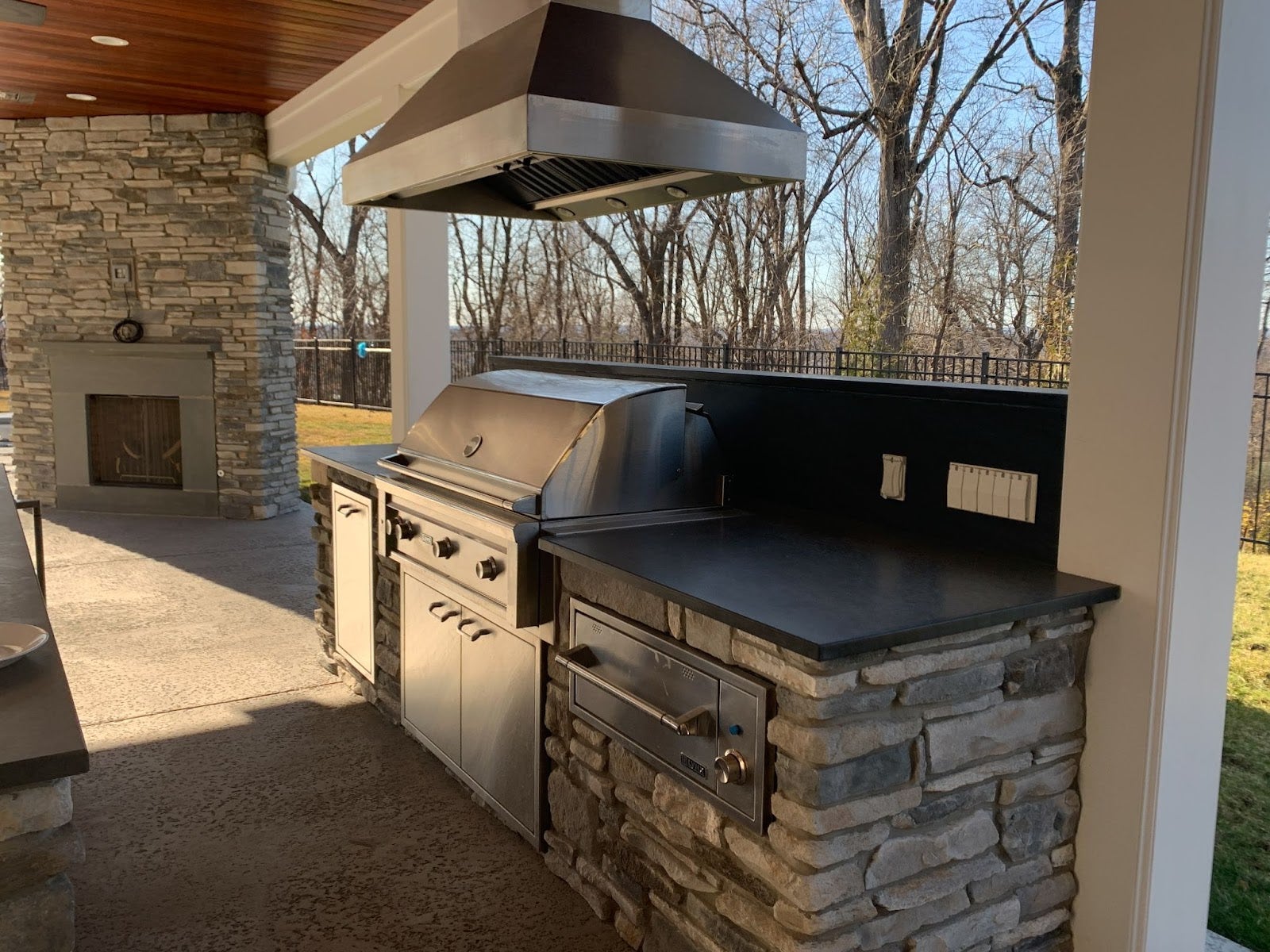
In this guide, we’ll delve into the factors you need to consider when determining the right CFM for your outdoor kitchen range hood, helping you create a cooking oasis that is as well-ventilated as it is inviting.
Table of Contents
Calculating CFM for Outdoor Hoods
One of the primary differences between indoor and outdoor kitchens is the power and heat output of the cooking equipment. Outdoor grills and smokers typically have much higher British Thermal Unit (BTU) ratings compared to their indoor counterparts. BTUs measure the amount of heat output, and this elevated heat and fume production in an outdoor setting requires a more robust ventilation system.
To determine the minimum CFM your outdoor kitchen range hood should have, simply take the total BTU output of all the outdoor cooking appliances under each hood and divide it by 100, then add 200.
For example, if your outdoor grill has a maximum BTU output of 60,000 and you have a side burner that produces an additional 15,000 BTUs, your total outdoor cooking BTU would be 75,000. Dividing this by 100 results in a minimum recommended CFM of 750. Then add 200 CFM. That would give you a minimum CFM of 950.
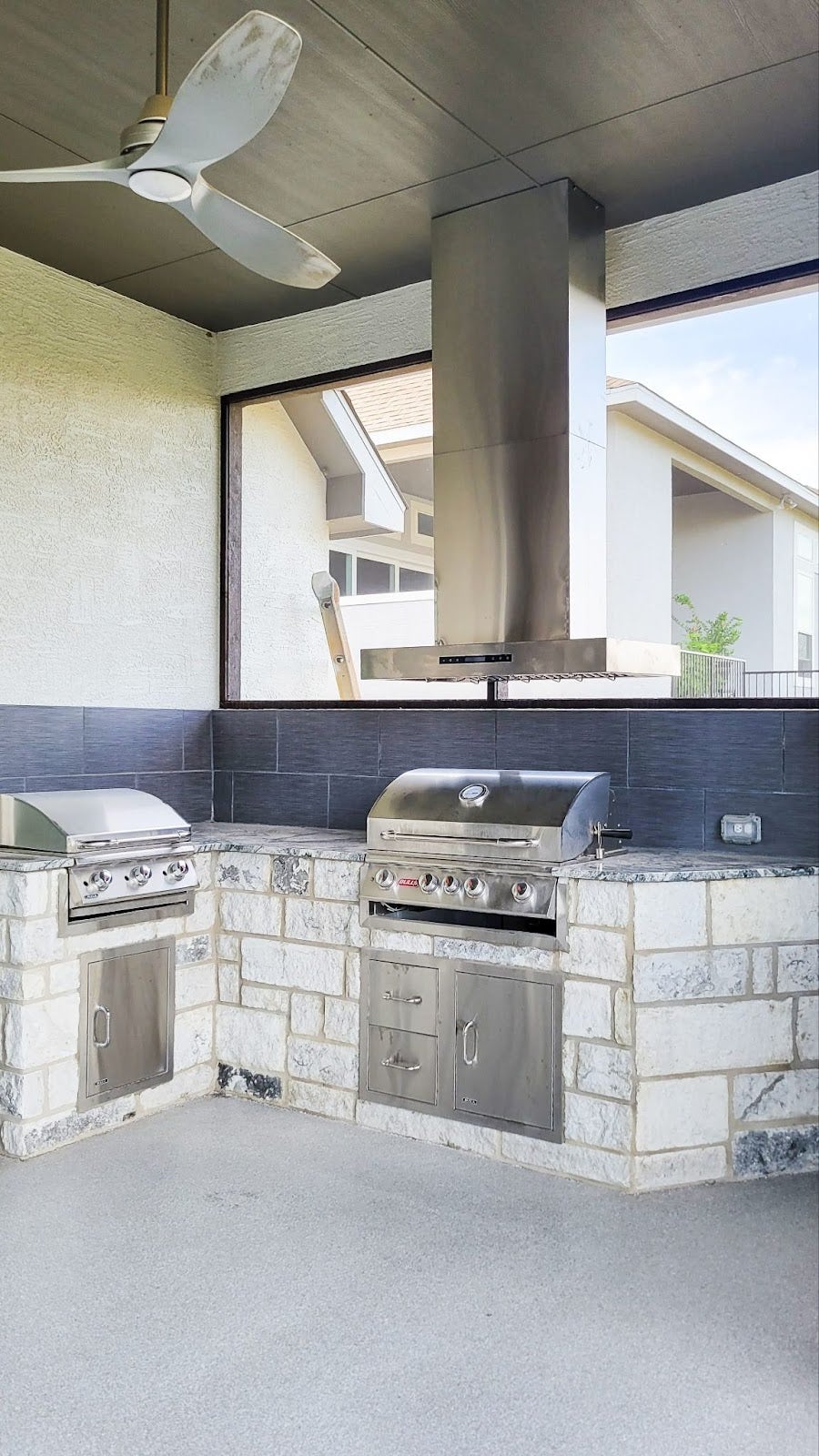
It’s important to note that this is just a starting point, as there are several other crucial factors to consider when sizing your outdoor range hood.

Factors to Consider
Natural Movement Kitchen/Entertaining Air
For open, breezy outdoor kitchens, err on the side of a higher CFM to ensure exceptional capture and exhaust of cooking byproducts. Conversely, for more sheltered setups, you may be able to get away with the recommended CFM while still maintaining excellent ventilation.
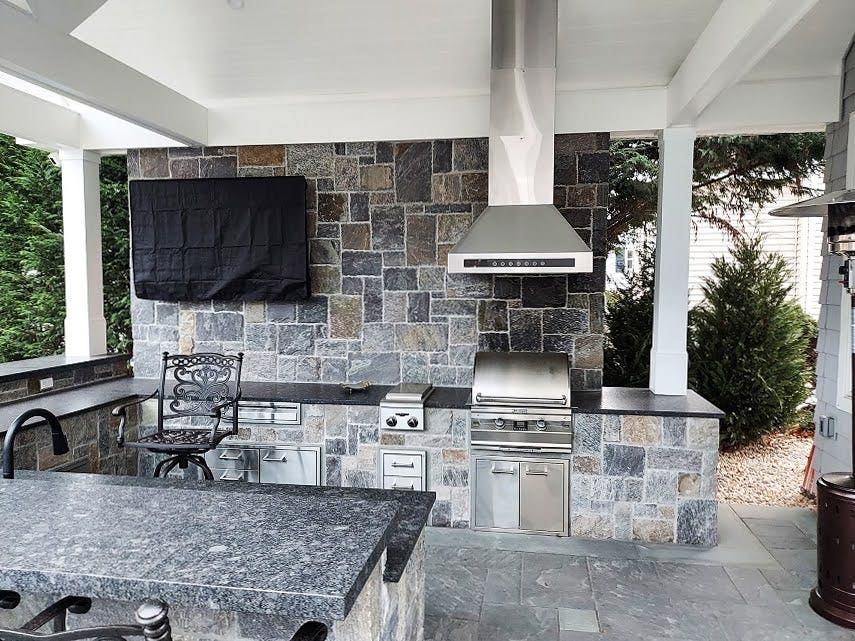
Consulting with a qualified HVAC professional can help you determine the ideal CFM for your specific outdoor kitchen layout and environment. Give us a call if you want any help – 877-901-5530.
Frequency and Intensity of Cooking
How often and what types of cooking you plan to do in your cooking area is another crucial factor. If you’re a frequent or heavy user of your outdoor cooking equipment, producing lots of high-heat searing, frying, or smoking, you’ll need a higher CFM range hood to handle the increased smoke, steam, and odors. Lighter, less frequent outdoor cooking may allow for a lower CFM model.
Ductwork Considerations
The length, number of turns, and presence of a roof cap in your ductwork can also influence the necessary CFM. Longer ductwork runs and multiple elbows or bends add resistance, requiring a higher CFM to overcome this. Additionally, if your outdoor vent hood vents directly through a roof cap, you’ll need to add approximately 40 CFM to your minimum requirement to account for this obstruction.
As a general guideline, factor in the following ductwork adjustments:
- For each foot of ductwork, add 1 CFM
- For each 90-degree turn in the ductwork, add 25 CFM
- If venting through a roof cap, add 40 CFM
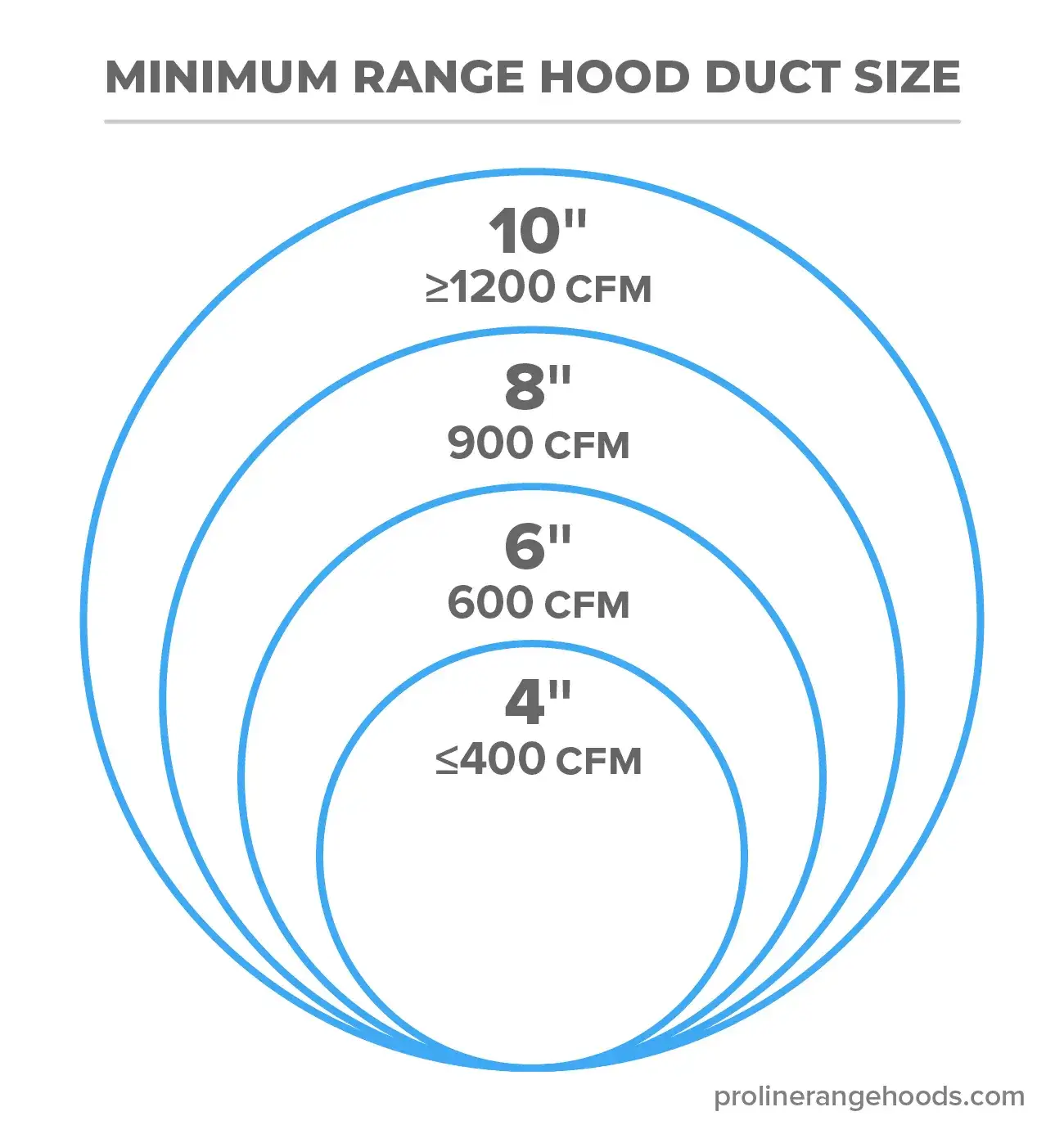
Recommended CFM Levels for Outdoor Kitchens
Based on the considerations outlined above, we generally recommend a minimum of 900 CFM for most outdoor range hoods. This provides a solid baseline of ventilation power to handle the increased heat, smoke, and odors of outdoor cooking.
However, for larger outdoor kitchens, heavy-duty cooking equipment, or frequent/intense use, you may want to consider range hoods in the 100-2000 CFM range or higher. These higher-powered models can more effectively capture and expel all the byproducts of outdoor cooking, keeping your outdoor living space comfortable and free of lingering cooking smells.
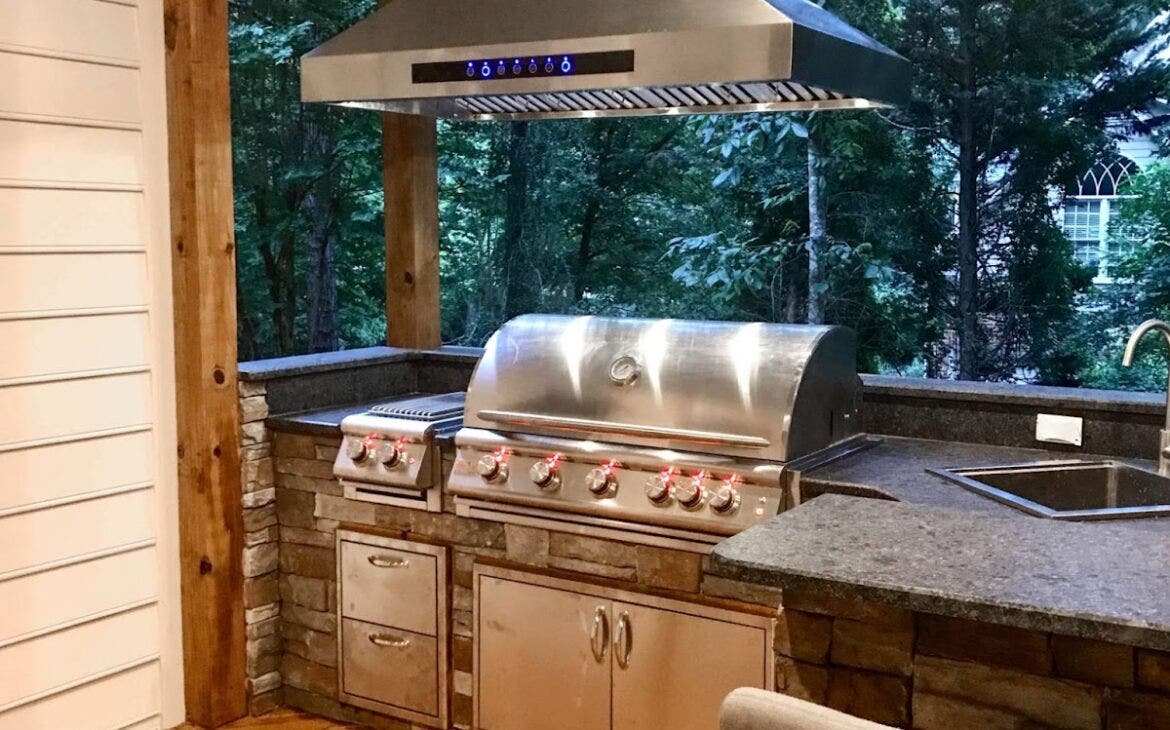
It’s also important to note that you can never have too much CFM for an outdoor kitchen. While you don’t want to overpower the space and create uncomfortable airflow, having a range hood with ample CFM capacity allows you to run it at lower speeds when needed, reducing noise and energy consumption. The ability to adjust the fan speed to match your cooking needs is a valuable feature.
Ductwork and Makeup Air Considerations
Proper ductwork sizing is crucial for an outdoor hood to perform optimally. As mentioned earlier, longer duct runs and more turns require higher CFM ratings to overcome the added resistance. For outdoor kitchens, we recommend using ductwork with a minimum diameter of 8 inches, and potentially 10-12 inches or larger for very high CFM models.
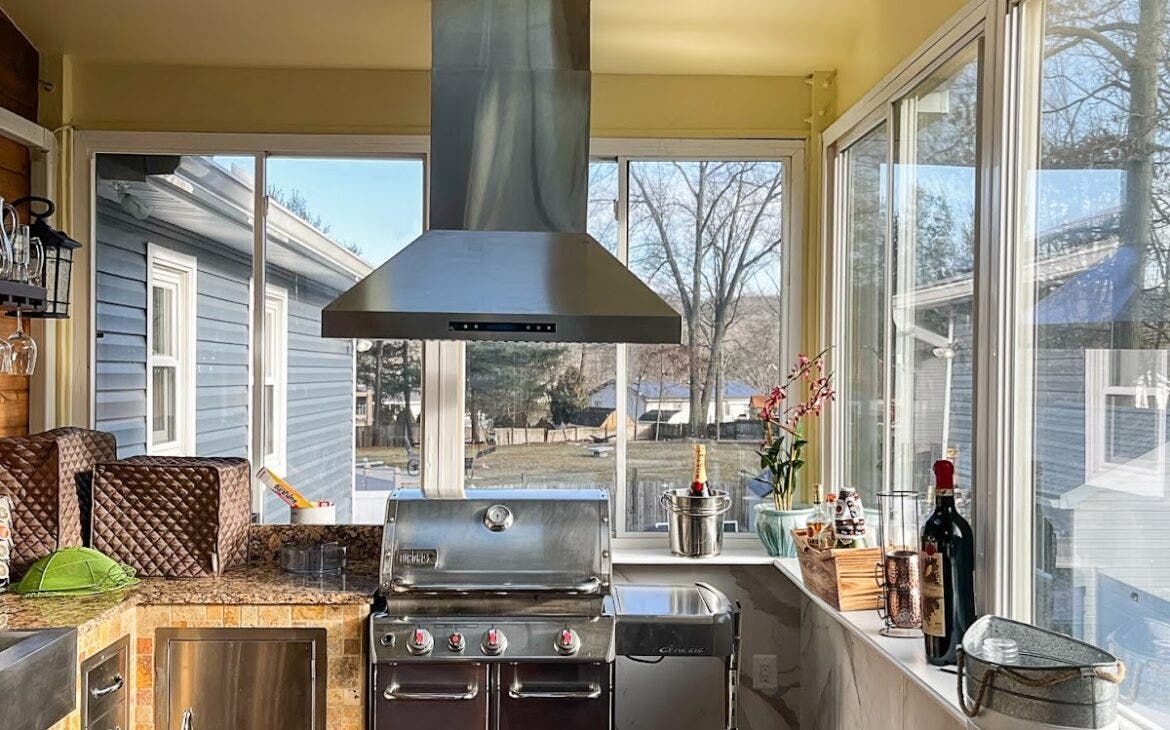
Unlike indoor kitchens, makeup air is not required for outdoor kitchens, even those with very high CFM ratings. The open-air nature of an outdoor environment generally provides sufficient makeup air to replace what is exhausted by the range hood. However, if your grilling area is enclosed, you may need one.
If you have any questions, it’s always a good idea to give us a call and consult with one of our experts. 877-901-5530.
Range Hood Features to Look For
When selecting an outdoor range hood there are a few key features to prioritize beyond just the CFM rating:
Stainless steel construction – Outdoor kitchens are exposed to the elements, so a range hood made from high-quality, corrosion-resistant stainless steel is essential.
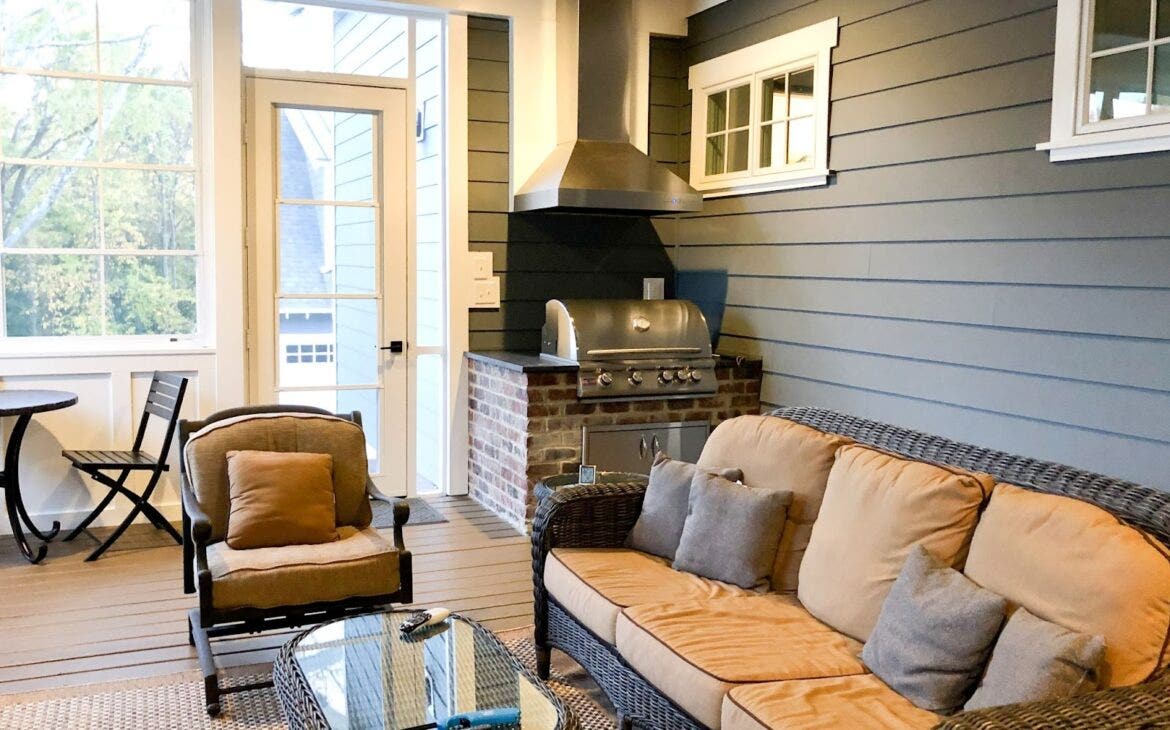
Variable speed controls – The ability to adjust the fan speed allows you to match the ventilation to your cooking needs, improving energy efficiency and noise levels.
Quiet operation – Outdoor entertaining often involves conversation, music, or other ambient noise, so a range hood with minimal operating noise is preferred.
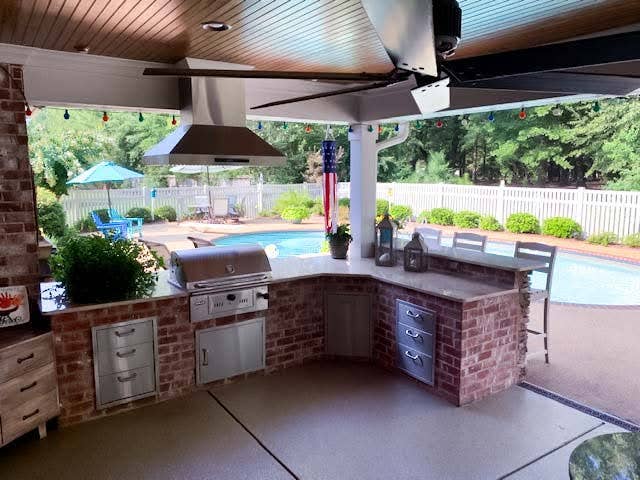
Determining your outdoor range hood’s CFM needs is a critical step in ensuring your new alfresco cooking space functions effectively and keeps your outdoor living environment comfortable. By carefully considering factors like cooking equipment, space size, ductwork, and usage patterns, you can select a range hood that provides the perfect balance of ventilation power and performance. With the right CFM rating, your outdoor kitchen will be well on its way to becoming a favorite gathering spot for friends, family, and delicious meals.
This article is intended to help you determine the optimal CFM (cubic feet per minute) requirements for your outdoor cooking ventilation system, whether you’re in the market for an outdoor kitchen exhaust fan, outside cooking ventilation system, patio/backyard range hood, exterior kitchen vent hood, or any other type of outdoor cooking vent, extractor, or canopy. By understanding the key factors that influence CFM needs for open-air and backyard cooking setups, you’ll be able to select the right ventilation solution to keep your outdoor kitchen clean, comfortable, and free of lingering cooking odors.
If you are looking for a deeper dive into the details you have found here, or are looking for CFM suggestions for indoor hoods, check out this article here!
Other Articles
Does an outdoor kitchen need a vent hood?
Who to Hire for Flawless Outdoor Range Hood Installation
How to Clean Your Outdoor Hood (3 Simple Steps)




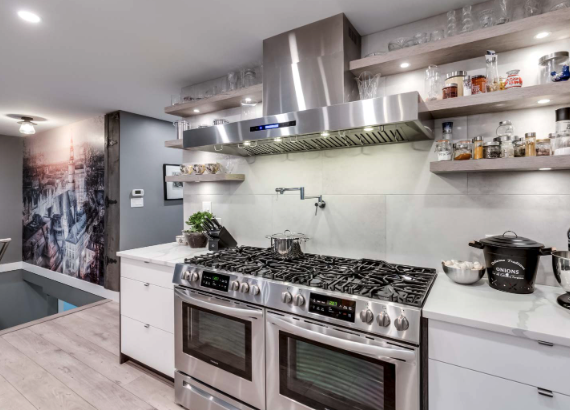
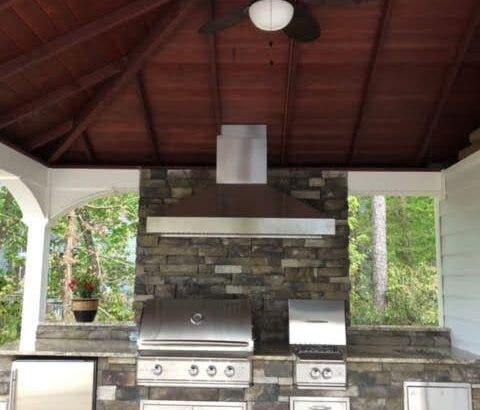
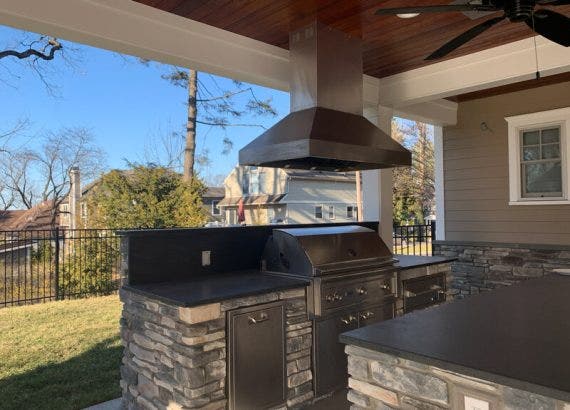
Comments are closed.